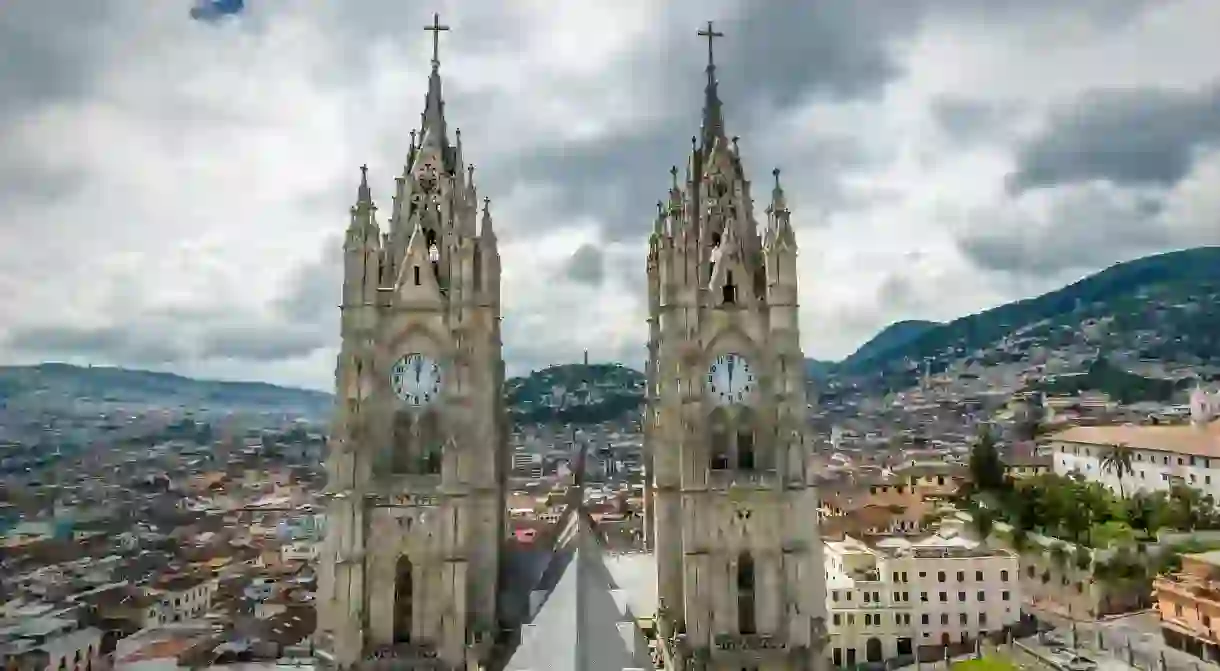Things to Know Before Visiting Quito

At the highest elevation of any capital in the world – and the closest to zero latitude – Quito is like a lost city in the clouds, surrounded by mountains and volcanoes. Its history stretches back for centuries, which is plain to see in the city’s captivating historical district. If you’re planning to visit, here’s some useful information you should know before you go.
To make the most out of your trip to Ecuador, travel with Culture Trip and let our Local Insider be your personal guide. From the old town of Quito to hiking volcanoes and biking to waterfalls, your itinerary will be action-packed with immersive activities.
Brace yourself for the risk of altitude sickness

The city of Quito is 9,350ft (2,850m) above sea level. This makes altitude sickness a real risk for first-time visitors. If you are not accustomed to this elevation, you might experience strong fatigue on your first day in the city, so simply taking it easy and resting is advised, particularly if you intend to go hiking and climbing in the surrounding mountains and volcanoes. Other symptoms of altitude sickness include persistent headache or nausea, as well as insomnia. If these feelings persist for more than 24 hours, seek medical advice.
Quito is a divided city
There are three distinct areas in Quito: the affluent northern region, studded with pricey high-rises and modern shopping malls; the historical center, rich with centuries-old churches and mansions, as well as museums; and the poorer neighborhoods of the south. You can gain a deeper understanding of these neighborhoods from Henry Rollins, writer, broadcaster and former lead singer for the ’80s punk band, Black Flag, who opted to stroll through Quito’s “zona gangsta” and wrote about it for his column in LA Weekly.
Quito has the largest concentration of classical architecture in South America

Founded in the 16th century, the “centro historico” in Quito is officially a Unesco-listed site, and home to the largest concentration of historical and classical architecture in all of Latin America – despite a catastrophic earthquake in 1917. The spectacular monasteries of San Francisco and Santo Domingo, and the Church and Jesuit College of La Compañía, typify the local style – a fusion of Spanish, Italian, Moorish, Flemish and indigenous art.
On Friday and Saturday nights, the restored historical boulevard, La Ronda, comes to life
This long and winding boulevard, which evokes an old Spanish neighborhood, was built in the 1800s. From the late 19th century to the 1930s it served as home to famous Ecuadorian artists, poets, and novelists, as well as prostitutes and vagrants. By the 1940s, however, most residents had abandoned the area, then in the 21st century, La Ronda was restored to its original glory with new art galleries and restaurants opening up.
Public transportation within the city is ubiquitous, efficient, and inexpensive

Quito has an extensive network of buses, as well two main streetcars that run the length of the city, going north and south. If you tell the conductor where you need to go, they will be more than willing to tell you where you need to get off. However, during rush hours these same transport vehicles will be packed like cans of sardines and you should take precautions against potential pickpockets.
Taxis are also inexpensive, but you should be cautious
Cab fares in Quito are fairly inexpensive and, by law, drivers are supposed to have meters operating at all times. To ensure you only travel in properly licensed taxis, it’s better to ask the staff at restaurants and hotels to call one for you, or to obtain an app that will send a secure, city-registered cab to you.
Even though Quito is on the equator, it gets cold at night
One of the most common misconceptions about Ecuador is that because the country is on the equator, the whole nation bakes in sweltering heat. Far from it. As noted above, Quito is high above sea level. During the day, it rarely gets any warmer than 66F (19C) and once the sun goes down it can get as bracing as 50F (10C) until morning.
However, because Quito is at zero latitude, you should protect yourself against the sun
Even though Quito is a cool city, the high altitude and zero latitude mean you are more exposed to UV rays than in other locations, so it’s important you take extra care of your skin. Don’t be afraid to wear a hat and use sunblock during daylight hours.
Common sense precaution against robbery and assault is advisable

To keep yourself as safe as possible, it’s recommended that you travel in a group and stay as close to people in that group when moving around the city. Follow this and remain in well-lit areas at night to reduce the chances of thieves looking to corner or pickpocket you.
Quiteños, and Ecuadorians in general, are notorious for not being punctual
Anybody who comes to Quito for more than just a visit, like to settle down or to do business, will have to get used to a certain degree of lateness. In recent years, there have even been government-sponsored campaigns aimed at promoting punctuality. Still, you should be aware that whether you’re calling on a lawyer or a carpenter, they might abide by “Ecuador time” – and won’t call to inform you either.
Many addresses have not one, but two distinct numbers
In the early 1990s, Quito mayor Rodrigo Paz initiated a reorganization of the city which included new codes for every single home and business, which explains the new localization system. However, rather than removing the old numbers before adding new ones, the municipality simply placed the new numbers over, under, or alongside the old ones, and hence, some people use the former numbers, some the “official” numbers, and some use both.













